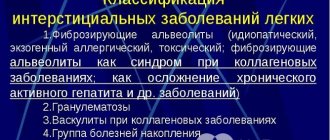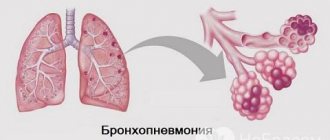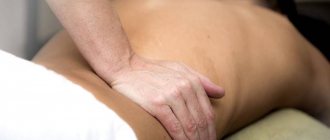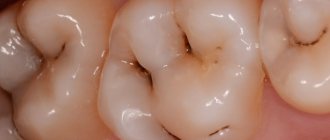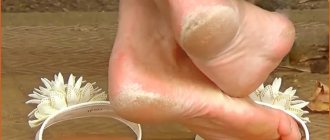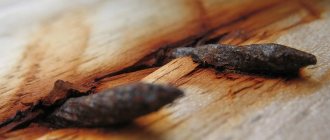Causes of tracheobronchitis
There are acute and chronic forms of the inflammatory process of the lower respiratory tract. The factors causing these forms of the disease are not the same. Factors contributing to the development of the disease:
- hypothermia;
- weakening of the immune system;
- nervous, physical exhaustion, chronic stress;
- bad habits (smoking);
- lack of vitamins and minerals;
- unfavorable climate for a given person.
Acute tracheobronchitis in most cases has:
- viral origin, closely related to influenza epidemics, ARVI;
- the etiology of the transition of the inflammatory process from the upper sections, caused by complications of sinusitis, tonsillitis, laryngitis, measles, etc.;
- artificial ventilation (“intubation” type).
Chronic tracheobronchitis occurs due to:
- the existence of a long-term external irritant (smoking, air pollution with dust, smoke, chemical agents, etc.);
- secondary infection of the damaged mucous membrane with pathogenic microorganisms;
- the presence of another chronic disease in the body that acts as a source of infection.
Allergic tracheobronchitis is associated with exposure to an external allergen source, most often of a household nature. Usually, when this allergen-irritant is eliminated, the disease stops.
Ambrobene for tracheitis for inhalation
Ambrobene in solution for inhalation is used in a dose of 1-3 ml: children under 2 years old take 1 ml, from 2 to 6 years old they need 2 ml, after 6 years old and adults need 3 ml for 1 session. A solvent (saline) is added to this amount of the drug in a 1:1 ratio. You need 2 sessions per day. Using the drug helps:
- facilitate coughing;
- make sputum more liquid;
- stimulate the restoration of the mucous membrane;
- increase the effectiveness of antibacterial therapy;
- reduce sore throat.
Inhalation of Ambrobene may cause temporary numbness in the mouth, drooling or dry mouth. The drug is contraindicated in lactating and pregnant women in the first trimester, and in the 2nd and 3rd trimester it is used with caution.
Symptoms of the disease
Tracheobronchitis combines the symptoms of tracheitis and bronchitis. The acute form of the disease is characterized by the following manifestations:
- dry unproductive cough without sputum, with clear mucus;
- pain in the chest when breathing deeply, after coughing attacks;
- temperature rise to 38°C and above;
- general weakness, increased sweating.
Symptoms and treatment of acute tracheobronchitis in children under 3 years of age require special attention. When sick, they experience increased heart rate and breathing, and a cough may be accompanied by vomiting. Cyanosis of the lips and convulsions are observed.
The duration of the acute form is about 3 weeks, the prolonged course is no more than 1 month. The chronic form is characterized by:
- constant cough with sputum, during exacerbation the sputum acquires a viscous, purulent consistency;
- persistent chest pain;
- shortness of breath during exercise;
- periodic increase in temperature, often low-grade fever (37°-37.5);
- periods of exacerbation and remission alternate.
In chronic disease, symptoms persist for more than 3 months.
Diagnosis and treatment are carried out by general practitioners and pulmonologists, who prescribe the following examination:
- general, biochemical blood test;
- chest x-ray;
- analysis for bacteriological culture of waste mucus;
- antibiotic sensitivity test;
- bronchoscopy;
- study of respiratory functions, etc.
If necessary, an allergist is involved in treatment.
Berodual for tracheitis: how to use in a nebulizer
Berodual for tracheitis can be administered through a nebulizer in the following doses for 1 session:
- up to 6 years – 0.5 ml;
- 6-12 years – 1 ml;
- from 12 years and adults – 2 ml.
The required amount of the drug is mixed with 3 ml of saline solution. Usually one procedure per day is enough, it is carried out 30 minutes before inhalation of an antibiotic or antiseptic.
The need for such treatment arises when there is difficulty breathing, paroxysmal cough caused by bronchospasm. The advantage of the drug is the minimal number of side effects. Berodual should not be used without a doctor's prescription; it is prohibited for pregnant women, high blood pressure or rapid heartbeat, or severe heart disease.
Complications of the disease
The acute form of the disease can cause the following pathologies:
- transition to a chronic form;
- pneumonia;
- obstructive bronchitis.
Complications of chronic bronchitis:
- bronchial asthma;
- chronic obstructive pulmonary disease;
- emphysema.
Description of the pathology
Tracheobronchitis is an inflammatory lesion of the tracheal mucosa. Both adults and children are at risk. In children, tracheitis develops together with infectious diseases of the respiratory tract. In adults, the disease is bacterial in nature and occurs together with diseases such as laryngitis and pharyngitis.
Symptoms of the disease:
- Attacks of dry cough
- Painful, uncomfortable sensations in the chest and throat
- Slight increase in body temperature
- Hoarseness in voice
- Nasal congestion
If timely treatment is not started, the pathology will progress and descend lower into the larynx, trachea and lungs. Bronchitis and suffocation may develop.
Treatment with folk remedies
In the treatment of acute and chronic tracheobronchitis in adults and children, folk remedies are used as complex therapy (the symptoms that appear are taken into account). It is advisable to use drugs that provide an antipyretic, expectorant, and reduce the viscosity of sputum effect.
For oral administration
The drugs are used to treat wet coughs; infusions and decoctions are prepared based on medicinal herbs and components that have an expectorant effect:
- An infusion of licorice root, marshmallow rhizomes and fennel seeds - prepare a mixture by taking 1 tablespoon of ingredients. Brew the mixture with three glasses of boiling water, keeping it in a thermos for 45-55 minutes. Strain the infused tea and drink 40 ml every two hours. As a result of intake, mucus leaves the bronchial lumen more efficiently. Used in the treatment of tracheitis.
- Prepare tea from the collection - just a tablespoon (1): marshmallow root, coltsfoot leaf, oregano herb. The mixture is brought to a boil and simmered in a closed container for half an hour. Drink after meals 3-4 times a day: adults - 100 ml, children from 10 to 14 years old - 50 ml, from 7 to 10 years old 40 ml, children over 3 years old and up to the age of seven - 20 ml.
- Boil half a medium, finely chopped onion in 300 ml of milk for 10 minutes. The strained composition is cooled to a temperature of 38-39°C. Drink 150-250 ml before bed. Helps well with tracheobronchitis in smokers.
- For a wet cough in the case of acute tracheobronchitis, prepare herbal tea from flax seeds, crushed marshmallow root, chamomile flowers, herbs and wild mallow flowers, taking a tablespoon of each component (1). The infusion is prepared in a thermos, pour the components into 0.8 liters of boiling water, wait 1 hour, filter. Drink 100-150 ml after meals (4-5).
To treat dry cough in adults when treating the disease, the following tea is prepared:
- boil in 1 liter of water using a water bath - a mixture of: medicinal hyssop (1 tablespoon of shoots with leaves), mullein flowers (1 tablespoon), marigold flowers (1 tablespoon), chamomile herb (1 tablespoon), for quarter of an hour. Wait until the broth cools down and filter. Tea has anti-inflammatory properties, transforms a non-productive dry cough into a wet one with the release of mucus from the bronchi. Consume 150-200 ml after meals. Not recommended in childhood, pregnancy and breastfeeding.
- mix creeping thyme, peppermint, large plantain - take a tablespoon of each (1). Steam for a third of an hour. The cooled tea is filtered. Drink after meals, half a glass three times a day.
Herbs and plant parts are used as medicinal components for preparing teas for treatment:
- marshmallow, root and rhizome;
- wild rosemary, leaf;
- elecampane tall, rhizome;
- oregano, herb;
- linden, inflorescences;
- forest raspberries, leaves and berries;
- Thermopsis lanceolata, herb (under medical supervision due to toxicity);
- wood mallow, grass and flowers;
- coltsfoot, leaf;
- buds of coniferous trees;
- medicinal hyssop, herb and flowers;
- mullein, flowers;
- Eucalyptus rodum, leaves;
- creeping thyme, herb, others.
We remind you that you cannot give cough suppressants and phlegm removers at the same time. If the condition worsens, be sure to seek treatment from a specialist (or continue previously prescribed treatment, for examination).
Steam inhalations for tracheobronchitis
This method allows you to effectively clear the lumen of the bronchi from accumulated mucus. Herbal decoctions are prepared, the list of which is given above. When carrying out the procedure, it is recommended to adhere to the following conditions:
- the temperature of the composition for open inhalation does not exceed 50°-60°C;
- inhalation duration – 10-15 minutes;
- Before the procedure, make sure there is no allergy to the components.
Inhalation is contraindicated in the following cases:
- body temperature above 37.5°C;
- frequent nosebleeds (fragile capillaries of the mucous membrane);
- heart failure, heart disease;
- high blood pressure;
- children whose age is less than 2 years.
An inhalation solution is prepared from one or a mixture of herbs - 1-1.5 tablespoons of the herb mixture are infused for 30-50 minutes, pouring 0.25 liters of boiling water. For a greater expectorant effect, add 3-4 drops of essential oil to the decoction:
- anise;
- black pepper;
- chamomile;
- mint;
- rosemary;
- fir;
- cedar;
- eucalyptus, others.
- tea tree, others.
Breathe over potatoes: the old method of steam inhalation is still relevant.
Tested solutions for inhalation:
- Baking soda and iodine solution: dissolve 1 tablespoon of baking soda in 1 liter of water, add 1-2 drops of iodine.
- Chamomile decoction: boil 3 tablespoons of chamomile flowers in 0.6-0.8 liters of water for 4-5 minutes over low heat. After 30 minutes, filter and carry out the procedure.
Rubbing
To rub the chest and back at night use:
- honey;
- badger fat;
- goat fat;
- camphor oil;
- cumin seed oil, other.
Rubbing is done if there is no elevated temperature.
Rules for inhalation therapy of tracheitis
To achieve positive results, therapeutic inhalation should be carried out in compliance with the following rules:
- It is recommended to do sessions more often than three times a day;
- The manipulation should be done on an empty stomach (last meal an hour before the session);
- During the session, it is recommended to behave calmly, not to move around, not to talk;
- combining inhalation with foot warming is prohibited;
- At the end of the session, you should lie down for half an hour.
Compliance with these conditions will help speed up the healing process. Ignoring them is fraught with a lack of therapeutic effect and worsening well-being.
Prevention of tracheobronchitis
To prevent illness, follow these rules:
- adhere to a healthy, balanced diet;
- take vitamins;
- give up bad habits - smoking, drinking alcohol;
- carry out regular wet cleaning of residential premises, maintaining air humidity of at least 50%, temperature about 18-20°C;
- dress according to the weather, avoid hypothermia;
- do not come into contact with people who have respiratory infections;
- lead an active lifestyle.
These measures will help not only in the prevention of tracheobronchitis, but also improve your quality of life and health. Also on our website we talk about the symptoms and treatment of bronchial asthma at home.
What effective, safe folk recipes do you know that help in the treatment of tracheobronchitis? Share your valuable experience!
What drugs can be used for inhalation in a child with tracheitis?
When treating a child, it is allowed to use drugs for which there is evidence of safety: Ambrobene or its analogue Lazolvan, Miramistin, Gedelix drops, Berodual. Since tracheitis is most often complicated by colds, it is recommended that frequently ill children undergo preventive courses before the outbreak of the epidemic and in the first days of illness. Antiviral agents and immune system stimulants are used:
- Interferon - powder is dissolved in 2 ml of water for injection, mixed with 2 ml of saline, 2 sessions per day;
- Aminocaproic acid – for one inhalation you need to mix 0.5-2 ml with 2 ml of saline solution, 1-2 procedures are prescribed per day;
- Derinat – 2 ml and 2 ml saline 2 times a day.
Derinat Aminocaproic acid Interferon
Features of the procedure
Inhalations help cure tracheobronchitis for adults and children. They speed up recovery in chronic and acute forms of pathology.
For children
Most inhalation medications for tracheitis are approved for children. Carrying out inhalations with children has its own characteristics:
- Monitor the child’s emotional state during the procedure - he should be calm and sit up straight
- The maximum temperature of the inhalation solution for children does not exceed 70 degrees, otherwise the child will suffer a burn to the mucous membrane
- Inhalation with a nebulizer is more effective than steam inhalation in children's treatment
- The duration of the procedure does not exceed 10 minutes
Procedure for pregnant women and nursing mothers
Pregnant and lactating women are allowed to treat tracheobronchitis by inhalation, provided that the choice of drugs is made by a doctor. As a rule, doctors prescribe herbal-based drugs and avoid the use of antibiotics. An allergist must conduct an allergen test before prescribing the drug. The course and dosage of medications for pregnant and lactating women has been reduced.
The inhalation procedure is approved by doctors as an auxiliary method for the treatment of tracheobronchitis. At the same time, the use of medications and the implementation of medical recommendations are not canceled. Before using folk remedies, especially for treating children, consult a doctor to prevent worsening.
Solutions for inhalation
Inhalation solutions improve mucus discharge and make breathing easier. Applicable:
- Soda solution - stir two teaspoons of salt in a glass of boiling water and inhale the vapors with your mouth. Breaths must be deep
- Alkaline - 5 ml of mineral water is heated to 35 degrees and inhaled
Inhalation with saline solution
Saline solution is used as an independent component for inhalation. It warms the trachea, helps with the discharge of sputum and the removal of mucous accumulations. It is used to dilute medications. This is a neutral, non-toxic product, approved for pregnant women and young children.
Herbal
Medicinal herbs reduce swelling of the mucous membrane and eliminate the inflammatory process. Most often used:
- Chamomile
- Coltsfoot
- Thyme
- St. John's wort
- Melissa
Do not cook the herb for a long time, 10 minutes is enough.
Contraindications
Despite the effectiveness of the procedure, there are a number of cases when inhalation cannot be used:
- The patient's temperature exceeds 37.5 degrees. Inhalations increase body temperature
- The patient has cardiovascular diseases and problems with heart function
- Bronchial asthma - inhalation can trigger an asthmatic attack
- Inhalations are contraindicated if the bronchi are sensitive to medications used in inhalers
